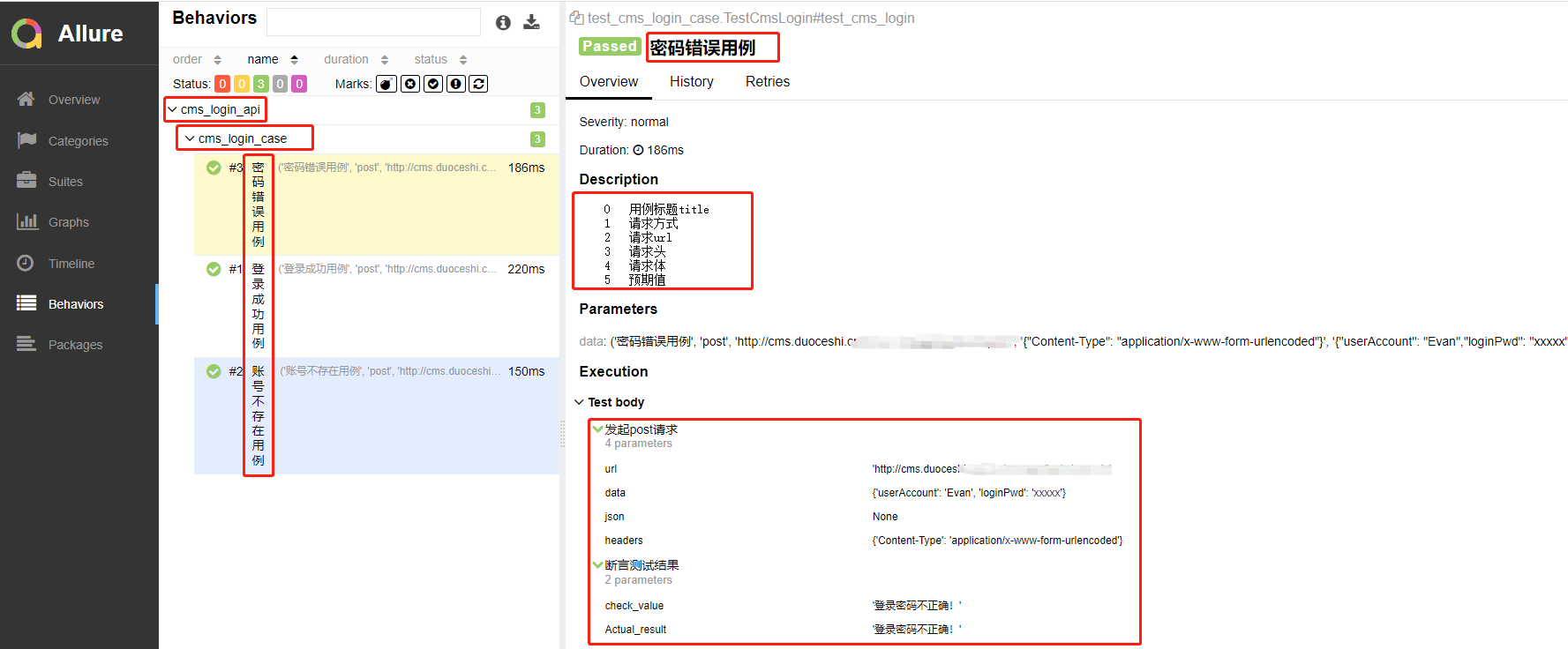1、框架结构图

2、config 配置数据
#_data:2022/4/3 #_author:多测师_Evan import os project_path = "D:\Evan_duoceshi\CodeFile\pytest_allure_excel" excel_data_path = os.path.join(project_path, "data", "test_data.xls")
3、data 中数据配置

4、pubilc 中封装的几个函数
# readExcel 中封装了excel读取功能 # 安装第三方模块 xlrd -- 实现读取excel文件的 # pip install xlrd import xlrd def getValue(fileName, sheetName, apiName): book = xlrd.open_workbook(fileName) sheet = book.sheet_by_name(sheetName) rows = sheet.nrows # 获取有效行数 6 colvalues = sheet.col_values(0) valueList = [] for i in range(1, rows): if colvalues[i] == apiName: rowvalue = sheet.row_values(i, 1, 7) valueList.append(tuple(rowvalue)) return valueList if __name__ == '__main__': print(getValue("../data/test_data.xls", "Sheet1", "cms_login"))
# request_func 中封装了请求操作 import requests import allure @allure.feature("封装的请求方法") class ApiKey(): def request_api(self, method, url, **kwargs): res = requests.request(method, url, **kwargs) return res @allure.step("发起get请求") def get_request(self, url, params=None, **kwargs): res = requests.get(url, params=params, **kwargs) return res @allure.step("发起post请求") def post_request(self, url, data=None, json=None, **kwargs): res = requests.post(url, data=data, json=json, **kwargs) return res
# assert_func 中简单封装了断言操作 import allure @allure.step("断言测试结果") def assert_result(check_value, Actual_result): assert check_value == Actual_result
5、test_cases 用例实现封装
import pytest from public.request_func import * from public.readExcel import * from config.path_config import * from public.assert_func import assert_result import json @allure.feature("cms_login_api") class TestCmsLogin(): @allure.story("cms_login_case") @pytest.mark.parametrize("data", getValue(excel_data_path, "Sheet1", "cms_login")) def test_cms_login(self,data): """ 0 用例标题title 1 请求方式 2 请求url 3 请求头 4 请求体 5 预期值 """ allure.dynamic.title(data[0]) # 自定义报告中用例title res = ApiKey().post_request(url=data[2], headers=json.loads(data[3]), data=json.loads(data[4])) assert_result(res.json()["msg"], data[5]) if __name__ == '__main__': pytest.main(["-s", "./test_cms_login_case.py", "--alluredir=../result", "--clean-alluredir"]) os.system("allure generate ../result -c -o ../report")
6、生成的可读性非常高的报告
